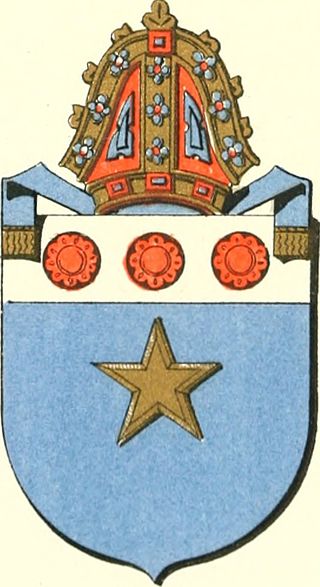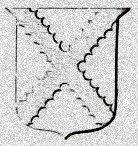Biography
Origin
He was said to have been the son of John Wemyss, fifth son of Sir John Wemyss of Wemyss, by a daughter of Sir John Arnot of Arnot (in Fife); if true, this would make him a relative of David Arnot, sometime Bishop of Galloway who resigned that bishopric in Wemyss' favour; [1] Robert Keith thought he may have been related to King James V, as a brother, [2] but this was a mistake based on textual misreading (mispunctuating) which resulted in Henry's name being confused with that of James Stewart, Earl of Moray, the King's actual brother. [3]
Earlier career
Henry is found as the Official of the diocese of Galloway on 8 February 1517, and again on 16 January 1522; the last known holder of this position occurred on 12 March 1512, so that Henry must have taken this position at some point between 1512 and 1517. [4] Henry was parson of the parish church of Auchterderran (Outherdekan), Fife, in the diocese of St Andrews, and is found to be Archdeacon of Galloway on 9 December 1522; like his position as Official, it is not known when he ascended the archdeaconry, and the last occurrence of a predecessor occurs on 9 November 1513. [5]
Bishopric of Galloway

Henry Wemyss received provision to the bishopric of Galloway (with the position of Dean of the Chapel Royal, Stirling) when David Arnot resigned his bishopric on 23/4 January 1526; Arnot retained right of return upon any future vacancy and half of the revenue of the diocese. [6] Although Arnot also resigned his position as Commendator of Tongland for, once again, a lifelong pension and with right of return on vacancy, Arnot may have effectively held on to Tongland Abbey for a few more years; repeated crown nominations of Wemyss to Tongland failed, apparently because of Arnot, while William Stewart, a canon of Glasgow Cathedral, also got crown nomination until the Pope finally agreed to give Bishop Henry Wemyss Tongland Abbey in commendam in 1530, with Stewart resigning his rights. [7]
The commend of Dundrennan Abbey came into Wemyss' possession after a crown nomination on 11 December 1529, to which he was admitted on 24 April 1530. [8] Henry also retained the Archdeaconry of Galloway after becoming bishop, at least until he resigned the position to Patrick Arnot on 11 February 1531. [9] Bishop Wemyss was a frequent attender of parliament, and his name occurs frequently as a witness to charters under the Great Seal of Scotland. [10] He appeared for the last time in the latter capacity on 14 March 1541. [10] He died soon after this date, and was certainly dead by 21 May. [11] On 25 May, Andrew Durie, Abbot of Melrose, was put in charge of the vacant temporalities of Galloway and Tongland; Durie indeed succeeded Wemyss to these positions later in the year. [12]
There survive some correspondences between Bishop Henry Wemyss and William Kennedy, Abbot of Crossraguel, written in the English language. [13] Bishop Henry and Abbot William have been said to have been close friends. [14] Two letters sent by Bishop Wemyss, dated to 5 July, and to 5 December 1536, survive; the first was addressed to "Jhone Makmaister and maister Patrik Ryschert", officials at Crossraguel Abbey, and the second to Abbot William; they concern certain revenues pertaining to one Ninian Boyd and his land at Culmoyr (Cùl Mòr, "big back"), [15] over which the bishop may have had rights; [16] Culmoyr was in the now defunct parish of Clashant, later belonging to the MacDowall kindred of Garthland. [17] Bishop Wemyss' signature has survived on the letter to Abbot William. [18]





